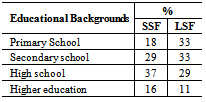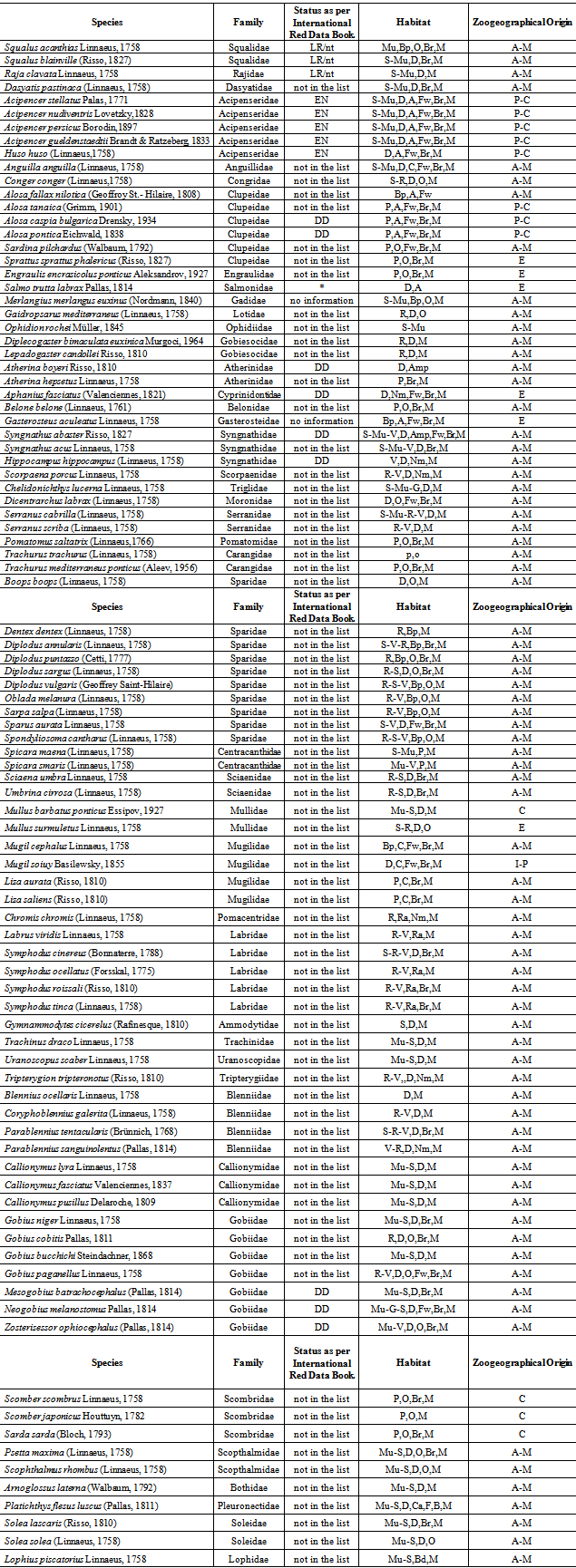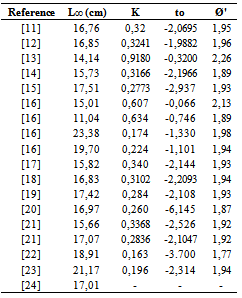| [1] | Anonymous, “Environmental indicators 2008”, Department of Environmental Inventory, Republic of Turkey Ministry of Environment and Forestry ISBN 978-605-393036-5, 36 pages, Ankara, 2009. Available:http://www.cevreorman.gov.tr/belgeler/cg2008.pdf |
| [2] | Özdemir, S. “The effect of position and mesh size of square mesh panel aplied in bottom trawl on catchıbility of different species”, Ondokuz Mayıs Üniversitesi Fen Bilimleri Enstitüsü, (Doktora Tezi), SAMSUN, 2006. |
| [3] | Yiğit, Ü., “ A Study on the Economic Analysis of Trawl Vessels in the Central Part of the Black Sea Region ”, Sinop University, Fen Bil Enst, Master Thesis, 74p., 2007. |
| [4] | Ak, O. and Genç, Y. The Black Sea Fishery. In: Tokaç, A., Gücü, A.C. and Öztürk, B. (Eds.), “The state of the Turkish fisheries”, Publication Number 35, Published by Turkish Marine Research Foundation, p. 182-213, Istanbul, Turkey, 2012. |
| [5] | FAO (2010). Available: http://www.fao.org/ |
| [6] | Anonymous, “2010 Yılı Balıkçı Tekneleri ve Av İstatistikleri”,. Tarım Bakanlığı, Sinop İl Müdürlüğü, Sinop, 2010a. |
| [7] | Erk, M.C. “Sinop İlindeki Balıkçılığın Sosyoekonomik Yapısı”, Seminar Thesis, 21p (Unpublished Data), 2012. |
| [8] | Çeliker, S. A., Korkmaz, Ş.A., Dönmez, D., Gül, U., Demir, A., Genç, Y., Kalkanlar, Ş., Öz-demir, İ., “Karadeniz Bölgesi’nde Su Ürünleri Avcılığı Yapan İşletmelerin Sosyo- Ekonomik Analizi”, Tarımsal Ekonomi Araştırma Enstitüsü. Ankara, 2006. |
| [9] | Bat, L., Erdem, Y., Ustaoğlu, S., Yardım, Ö., Satılmış, H.H., “A Study on the Fishes of the Central Black Sea Coast of Turkey”, J. Black Sea/ Mediterranean Environment, 11 (3), 287-302, 2005. |
| [10] | Anonymous. 2010 Yılı Su Ürünleri İstatistikleri. TUİK, Ankara, 2010b. |
| [11] | Erkoyuncu, İ. and Özdamar, İ., “Estimation of the age, size and sex composition and growth parameters of Anchovy Engraulis encrasicolus (L) in the Black Sea”Fisheries Research, (7): 41-247, 1989. |
| [12] | Karaçam, H. and Düzgüneş, E., “Age, growth and meat yield of European Anchovy (Engraulis encrasicolus L.,1758) in the Black Sea”, Fisheries Research, 9: 181-186, 1990. |
| [13] | Düzgüneş, E. and Karaçam, H., “Investigation on some population parameters and growth characteristics of anhovy (Engraulis encrasicolus L., 1758) in the Black Sea”, Doğa Zooloji, (13): 7-83 (in Turkish), 1989. |
| [14] | Ünsal, N., “A study on age-legth-weight relationship and determination of the smallest catching size of anchovy, Engraulis encrasicolus (L., 1758) in the Black Sea”, Ist. Univ., J. Of Aquatic Products, 3(1-2): 17-28 (in Turkish), 1989. |
| [15] | Özdamar, E., Khiara, K. Sakuramato, K. and Erkoyuncu, İ., “Variation in the population structure of European Anchovy, Engraulis encrasicolus L. In The Black Sea”, Journal of the Tokyo University of Fisheries, (81)2: 123-134, 1994. |
| [16] | Bingel, F., A.C. Gücü,. U. Nierman,. A.E. Kıdeyş,. E. Mutlu,. M. Doğan,. Y. Kayıkçı., D. Avşar,. Y. Bekiroğlu,. Y. Genç,. H. Okur and M. Zengin, “Stock Assesment Studies of the Black Sea Coast”, Tubitak, Final Report, 172, 1996. |
| [17] | Mutlu, C., Düzgüneş, E. and Şahin, C., “Some population parameters of european anchovy (Engraulis encrasicolus L., 1758) in the Eastern Black Sea”, E. Anatolia Ragion I. Fish. Semp. 23-25 June 1993, Erzurum, Turkey, 423-431 (in Turkish), 1993. |
| [18] | Özdamar, E., Samsun O. and Erkoyuncu, İ., “The estimation of population parameters for anchovy (Engraulis encrasicolus L.) during 1994-1995 fishing seasons in the Turkish Black Sea region”, Ege University Faculty of Fisheries, J. of Fish and Aquatic Science, 12(1-2), 135-144 (in Turkish), 1995. |
| [19] | Kayalı, E., “A research on bioecological properties of anchovy (Engraulis encrasicolus) and mackerel (Trachurus mediterraneus) fises in the Eastern Black Sea Ecosystem”, Msc. Thesis, K.T.U., Sci. Tech., 238 p. (in Turkish), 1998. |
| [20] | Gözler, A.M. and Çiloğlu, E., “A research on some population parameters of european anchovy (Engraulis encrasicolus L., 1758) caught in the Rize-Hopa coasts (in Turkish)”,Eastern Anatolia Ragion III. Fisheries Semp. 10-12 June 1998, Erzurum, Turkey, 373-383, 1998. |
| [21] | Samsun, O., Samsun, N. and Karamollaoğlu, A., “Age, growth and mortality rates of the European anchovy (Engraulis encrasicolus L., 1758) in the Turkish Black Sea Coast”, Turkish Journal of Veterinary and Animal Sciences, 28(5): 901-910, 2004. |
| [22] | Samsun, O., Kalaycı, F., Samsun, N. ve Bilgin, O., “Orta Karadeniz’de İki Tekne ile Çekilen Ortasu Trolünün Av Verimi ve Av Kompozisyonun Belirlenmesi”, Ondokuz Mayıs Üniversitesi, Araştırma Fonu SSÜ 094 nolu Proje Sonuç Raporu, 97 s. (in Turkish), Samsun, 2006a. |
| [23] | Bilgin, S., Samsun, N., Samsun, O. ve Kalaycı, F., “Estimation of population parameters of anchovy, Engraulis encrasicolus L. 1758, at 2004-2005 fishing season in The Middle Black Sea, using length frequency analysis methods”, Ege Üniversitesi, Su Ürünleri Dergisi, 23(1-3): 359- 364 (in Turkish), 2006. |
| [24] | Özdemir, S., Erdem., E. Aksu, H. ve Özdemir Birinci, Z., “Ortasu Tolü ile Avlanan Hamsi (Engraulis encrasicolus, L.) ve Çaça (Sprattus sprattus L.) Balıklarının Av Verimi ve Boy Kompozisyonu ile Bazı Populasyon Parametrelerinin Tahmini”, XV. Ulusal Su Ürünleri Sempozyumu, Abstract Book pp.479, 2009a. |
| [25] | Yücel, Ş. and Erkoyuncu, E., “Population Dynamics of Horse Mackerel (Trachurus trachurus L., 1758) Stocks in the Mid Black Sea, Turkey”, Turkish Journal. of Biology, 24:543-552 (in Turkish), 2000. |
| [26] | Kalaycı, F., “The determination of population parameters and reproduction characteristics of horse mackerel (Trachurus trachurus L., 1758) caught in the middle Black Sea”, Doktora Tezi, Ondokuz Mayıs Üniversitesi Fen Bilimleri Enstitüsü, 119s. (in Turkish), 2006. |
| [27] | Samsun, N., Kalaycı, F., Samsun, O. ve Bilgin, O., “The determination of some biological characteristics of horse mackarel (Trachurus trachurus L., 1758) caught in Samsun Bay”. Ege Üniversitesi Su Ürünleri Dergisi, 23(1/3): 481-486 (in Turkish), 2006b. |
| [28] | Kasapoğlu, N., “Doğu Karadeniz’deki İstavrit (Trachurus mediterraneus Steindachner, 1868) Balığının Stok Yapısı ve Populasyon Parametreleri”, Yüksek Lisans Tezi Karadeniz Teknik Üniversitesi Fen Bilimleri Enstitüsü Su Ürünleri A.B.D., 61s. (in Turkish), 2006. |
| [29] | Özdemir, S., Erdem, E., Özdemir Birinci, Z., Şahin, D., “Estimation of Population Parameters from Length Composition of Pelagic Species Caught in the Black Sea: Horse mackerel (Trachurus trachurus), Blue fish (Pomatomus satatrix) and Shad (Alosa alosa)”, Fırat Üniversitesi Journal of Science, 21(1):1-8. (in Turkish), 2009b. |
| [30] | Samsun, O., Özdamar, E. ve Aral, O., “Research on The Some Characteristics of The Whiting (Gadus merlangus euxinus Nordman, 1840) Caught By The Trawler in The Mid Black Sea Region From The Point of View of Fishery Biology”, Ege Üniversitesi Fen Fakültesi Dergisi. Seri B. 16(1):1003 – 1011 (in Turkish), 1994. |
| [31] | Düzgüneş, E. and Karaçam, H., “Doğu Karadeniz’deki Mezgit (Gadus euxinus Nord.,1840) Balıklarında Bazı Populasyon Parametreleri, Et Verimi ve Biyokimyasal Kompozisyon”, Doğa-Tr. J. of Zooloji, 14, 345-352 (in Turkish), 1990. |
| [32] | Samsun, O., “Research On The Whiting (Gadus merlangus euxinus Nordman, 1840 ) Caught By The Bottom Trawlers İn The Mid Black Sea Region From The Point of View of Fishery Biology Between 1991 And 1994 Fishery Season”, Süleyman Demirel Üniversitesi, Eğirdir Su Ürünleri Fakültesi Dergisi. 4:273–282 (in Turkish), 1995. |
| [33] | Özdamar, E. and Samsun, O., “The Estimation Of Some Parameters Concerning Population Dynamics Of Whiting (Gadus merlangus euxinus Nord., 1840) Stock in The Samsun Bay”, Ondokuz Mayıs Üniversitesi Fen–Edebiyat Fak. Fen Dergisi, 5(1): 128–140 (in Turkish), 1995. |
| [34] | Samsun, N. ve Erkoyuncu, İ., “The research on the estimation of some parameters of whiting (Gadus merlangus euxinus Nordmann, 1840) caught by the bottom trawlers in the area of Sinop (Black Sea) from the view point of fishery biology”, E Ü. Su Ürünleri Dergisi, 15 (1-2): 19-31 (in Turkish), 1998. |
| [35] | Özdemir, S., Erdem, Y. ve Sümer, Ç., “The comparison of population parameters of Turbot (Psetta maxima, Linneaus, 1758) and Whiting (Merlangius merlangus euxinus, Nordman 1840) which are estimated by using age and length data”, Ondokuz Mayıs Üniversitesi Ziraat Fakültesi Dergisi, 21(1), 71-75 (in Turkish), 2006. |
| [36] | Erkoyuncu, İ., Erdem, M., Samsun, O., Özdamar, E. and Kaya, Y., “A research on the determintion of meat yields, chemical composition and weight-lenght relationship of some fish species caught in the Black Sea ”, İstanbul University Journal of Aquatic Products, 8(1-2): 181-191 (in Turkish), 1994. |
| [37] | Kalaycı, F., Samsun, N., Bilgin, S. and Samsun, O., “Length-Weight Relationship of 10 Fish Species Caught by Bottom Trawl and Midwater Trawl from the Middle Black Sea, Turkey”, Turkish Journal of Fisheries and Aquatic Sciences, 7: 33-36, 2007. |
| [38] | Samsun, S., “The Determination of Some Population Parameters of the Whiting (Merlangius merlangus Linnaeus, 1758) at 2001-2003 Fishing Season Caught in the Middle Black Sea”, 22 (1):47-54 (in Turkish), 2010. |
| [39] | Özdamar, E., “Samsun Körfezinde Dip Trolüyle Avlanan Tirsi Balığının Alosa pontica (Eichwald, 1838) Balıkçılık Biyolojisi Yönünden İncelenmesi”, Doğu Anadolu Bölgesi II. Su Ürünleri Sempozyumu, 14-16 Haziran 1995, Bildiriler Kitabı, 570-583 (in Turkish), 1995. |
| [40] | Özdemir, S., Erdem., E. Aksu, H. and Özdemir Birinci, Z., “Determination of catch composition and length-weight relationship of some pelagic fishes caught by pairly midwater trawl”, J.FisheriesSciences.com. 4(4): 427-436, 2010. |
| [41] | Koca, H.U., “A Study on the determination of some parameters of the scorpion fish (Scorpaena porcus Linne., 1758) caught by bottom nets in the area of Sinop in terms of fishery biology”, Turkish Journal of Veterinary and Animal Sci., 26: 65-69 8 (in Turkish), 2002. |
| [42] | Özdemir, S., Erdem, Y., Özdemir Birinci, Z., Erdem, E., “Comparison of catch efficiency and size composition of bluefish (Pomatomus saltatrix, L.) Fishing by bottom trawl in the blacksea in October and november months”, Erciyes Üniversitesi Fen Bilimleri Dergisi, 25 (1-2). (in Turkish), 2009c. |
| [43] | Özdemir, S., Erdem, Y., Erdem, E., Özdemir Birinci, Z., “Comparison of size composition and catch Efficiency of horse mackerel (Trachurus trachurus, L.) and Blue fısh (Pomatomus saltatrix, L.) Caught by bottom trawl from different fishing areas”, Celal Bayar Üniversitesi Fen Bilimleri Dergisi, 5(1):19-26 (in Turkish), 2009d. |
| [44] | Kalaycı, F., Bilgin, S., Samsun, O. and Samsun, N., “Researching the place of fisheries industry and general state of the sprat (Sprattus sprattus phalericus Risso, 1826) fishing Middle Black Sea Region”, Ege Üniversitesi Su Ürünleri Dergisi, 23(1/3): 449-455 (in Turkish), 2006. |
| [45] | Erdem, Y., “A study on the selectivity of Turbot (Scophthalmus maeoticus Pallas,1881) gill nets”, Doktora Tezi, OMÜ., Fen Bilimleri Enst., 63s. (in Turkish), 1996. |
| [46] | Gücü, A.C. Small pelagic fish and fisheries in Turkey. In: Tokaç, A., Gücü, A.C. and Öztürk, B. (Eds.), “The state of the Turkish fisheries”, Publication Number 35, Published by Turkish Marine Research Foundation, p. 1-17, Istanbul, Turkey, 2012. |
| [47] | Kaykaç M.H., Tosunoglu, Z., Tokaç, A. Trawl fisheries. In: Tokaç, A., Gücü, A.C. and Öztürk, B. (Eds.), “The state of the Turkish fisheries”, Publication Number 35, Published by Turkish Marine Research Foundation, p. 316-328, Istanbul, Turkey, 2012. |
| [48] | Tokaç A. Classification of commercial fishing gears and methods in Turkish fisheries. In: Tokaç, A., Gücü, A.C. and Öztürk, B. (Eds.), “The state of the Turkish fisheries”, Publication Number 35, Published by Turkish Marine Research Foundation, p. 154-181, Istanbul, Turkey, 2012. |

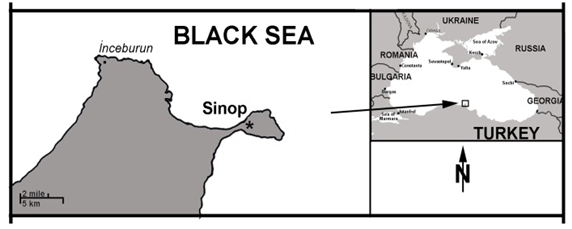
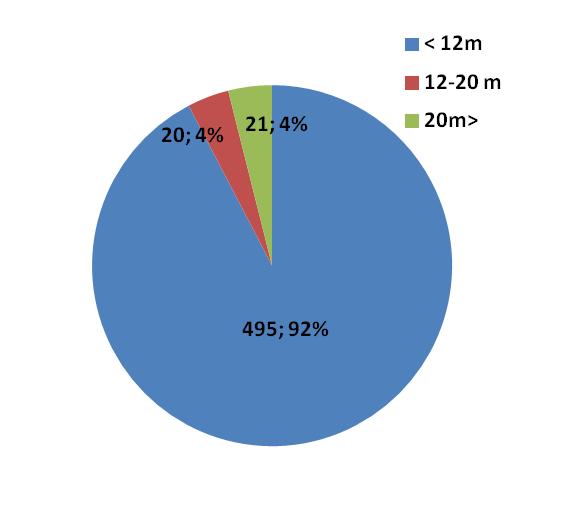
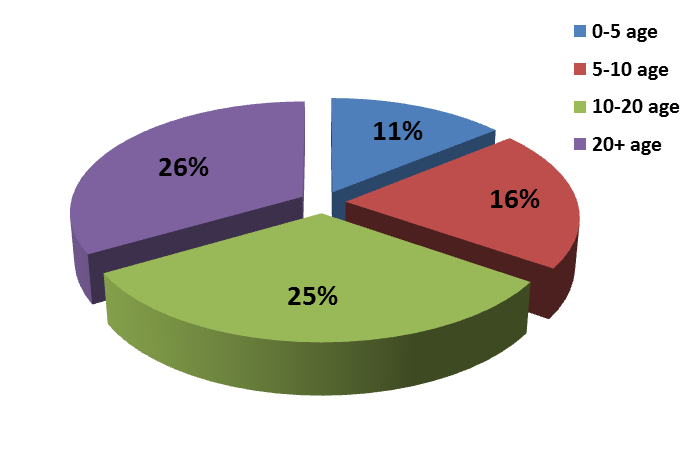
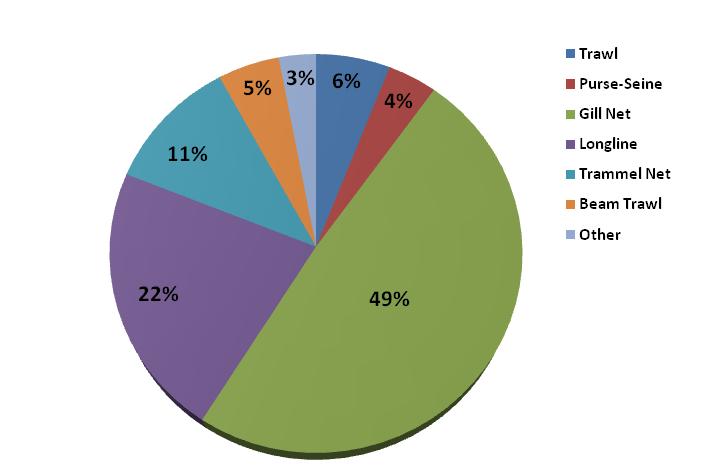
 Abstract
Abstract Reference
Reference Full-Text PDF
Full-Text PDF Full-text HTML
Full-text HTML
